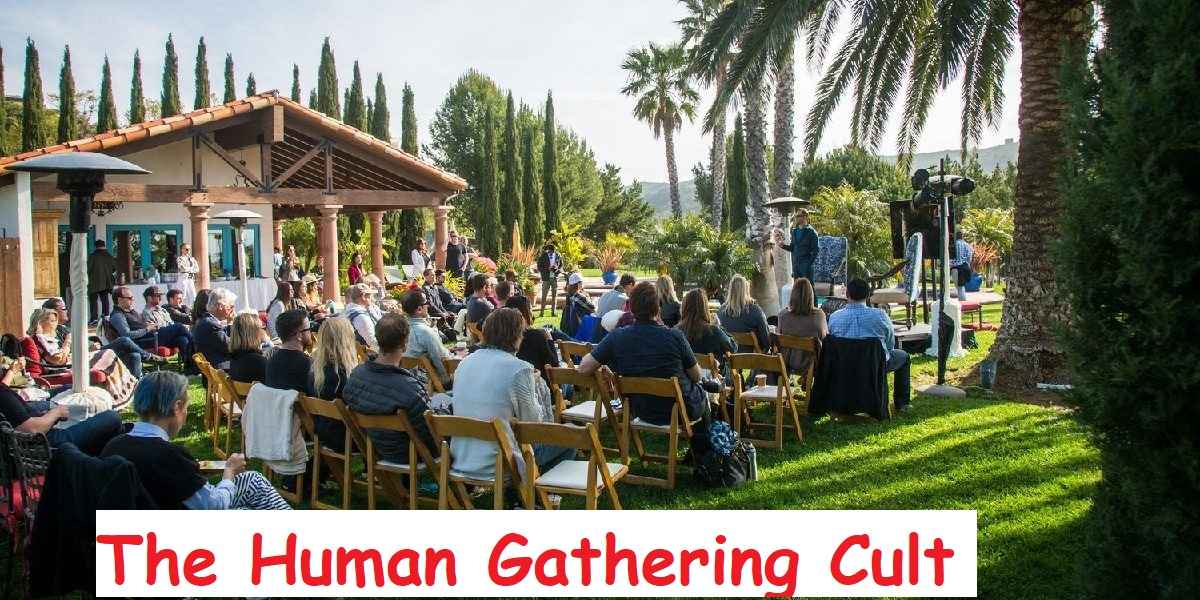Human gatherings have been a fundamental aspect of civilization since the dawn of time. Whether it’s for religious worship, community bonding, or social celebration, these gatherings often serve as a cornerstone for cultural and social identity. However, within the spectrum of human gathering, there exists a more obscure and often misunderstood phenomenon: the human gathering cult. This article delves into the nature of these cults, their psychological underpinnings, and the impact they have on individuals and society.
What is a Human Gathering Cult?
A human gathering cult can be broadly defined as a group that centers around a specific set of beliefs, rituals, or ideologies, often led by a charismatic leader. These groups typically require a high level of commitment from their members and can be characterized by extreme practices, isolation from the wider community, and a strong emphasis on collective identity. The term “cult” often carries negative connotations, implying manipulation, control, and exploitation, though not all human gathering cults exhibit these traits.
The Psychology Behind Human Gathering Cults
The psychology of cults is complex, with several factors contributing to why individuals are drawn to them. Here are some of the key psychological elements:
- Belonging and Identity: Many people join cults because they provide a strong sense of belonging and identity. In a world where people often feel disconnected or lost, cults offer a clear sense of purpose and community.
- Charismatic Leadership: Cults are often led by individuals who possess strong charisma and the ability to persuade others. These leaders often present themselves as having special knowledge, spiritual insight, or a unique mission.
- Cognitive Dissonance: Members of a cult may experience cognitive dissonance, where they hold two conflicting beliefs but resolve this tension by fully committing to the cult’s ideology. This mechanism reinforces their loyalty and discourages dissent.
- Isolation and Control: Cults frequently isolate their members from outside influences, which can make it difficult for individuals to leave or question the group’s beliefs. This isolation is often coupled with control tactics, such as manipulation of information, emotional dependency, and social pressure.
The Impact of Human Gathering Cults
The impact of human gathering cults on individuals and society can be profound and varied. For individuals, the effects can range from a positive sense of community and belonging to negative outcomes such as psychological manipulation, financial exploitation, and even physical harm. For society at large, the presence of cults can be both a source of concern and a reflection of broader social issues.
- Positive Impacts: Not all cults are harmful. Some provide members with a sense of community, purpose, and a supportive environment. In some cases, cults have contributed to charitable work, social change, and personal transformation.
- Negative Impacts: Unfortunately, many cults have a darker side. Psychological manipulation, emotional abuse, and financial exploitation are common issues. In extreme cases, cults have been involved in illegal activities, including violence, fraud, and human trafficking.
- Societal Reflection: The existence and appeal of cults can also reflect societal challenges, such as a lack of community, increasing isolation, and the search for meaning in a rapidly changing world. Cults can sometimes fill a void left by traditional institutions like religion or family.
Case Studies: Notable Human Gathering Cults
Throughout history, there have been several notable human gathering cults that have captured public attention. Some of these include:
- The People’s Temple: Led by Jim Jones, this cult ended in tragedy with the Jonestown massacre in 1978, where over 900 members died in a mass suicide/murder event.
- Heaven’s Gate: A cult that combined Christian beliefs with UFO conspiracies, leading to the mass suicide of 39 members in 1997, believing they would ascend to a spaceship.
- The Manson Family: Led by Charles Manson, this cult was responsible for a series of brutal murders in 1969, which they believed would trigger an apocalyptic race war.
Conclusion: Navigating the Complexities of Human Gathering Cults
Human gathering cults are a complex and multifaceted phenomenon that can offer insight into the broader human experience. They highlight the deep-seated need for belonging, purpose, and identity, as well as the potential dangers of unchecked power and manipulation. Understanding the psychology behind these groups can help individuals and society navigate the challenges they present and provide support to those affected by them.
In a world where the boundaries of belief and community are continually shifting, it is essential to approach the topic of human gathering cults with both caution and compassion. By doing so, we can better understand the forces that drive people to these groups and work towards creating healthier, more inclusive communities.











